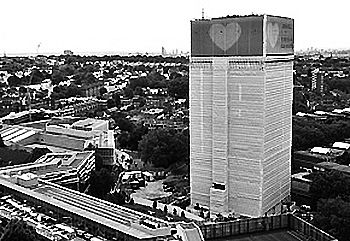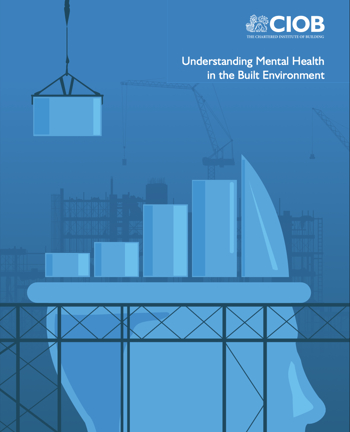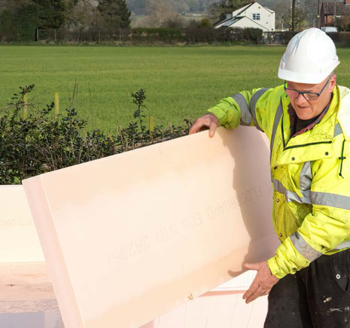Stakeholder map
The term 'stakeholder' refers to anyone that has an interest in a project and can influence its success. Stakeholders may be able to help a project succeed, or to prevent it from happening.
Examples of stakeholders include:
- Members of the client organisation (such as user panels, champions and department heads).
- Other user groups (such as customers, residents, occupants, and visitors).
- Neighbours and community groups.
- Funders and shareholders.
- The local authority.
- Other statutory and non-statutory authorities.
- Special interest groups.
- Suppliers.
- The emergency services.
- Statutory utilities.
- Heritage organisations.
Stakeholder mapping is a systematic approach to managing relationships with stakeholders to ensure that the positive impacts of stakeholders are maximised and negative impacts are minimised.
As stakeholders can influence the success of a project, it is very important that they are identified as early as possible and that their potential influence is systematically assessed. This might include an assessment of:
- The likely impact of the project on the stakeholder.
- The issues that they will have an interest in.
- Their likely position.
- Their ability to influence the project.
- Their potential impact on the project.
- Potential mitigating actions.
Stakeholder assessments are complicated by the fact that stakeholders may not all have the same objectives.
A first step in considering how to interact with different stakeholders can be the preparation of a stakeholder map or stakeholder matrix. This might categorise stakeholders as potential advocates that can help make the project happen, indifferent stakeholders, or opponents that may try to prevent it happening. They might then be assessed in terms of their potential influence on the project, the consequences of that influence on the project and the potential for changing their position (for example their willingness to engage in dialogue).
Resources are best targeted at stakeholders with a strong potential to influence the project, the consequences of which would be serious, but where there is a good possibility of changing their position.
A stakeholder management plan sets out the strategy for engaging with (or perhaps not engaging with) each stakeholder. It will allocate responsibility for that engagement, define the form that the engagement will take and what it is intended to achieve, as well as setting out how that engagement will be monitored and how any feedback will be processed. A stakeholder management plan should also include contact details for stakeholders and may include other background information.
Preparing a stakeholder management plan should not be a paper exercise, but should be a genuine process of understanding motives, building relationships and support, minimising risks and maximising opportunities. The stakeholder management plan should be kept up to date, and stakeholders should be kept informed about developments on the project.
A variety of communicating methods can be used to help stakeholders properly understand the project (such as models and visualisations) and a variety of consultation methods can be adopted:
- One to one consultations.
- Meetings.
- Focus groups.
- Questionnaires.
- Exhibitions and open-days.
- Workshops.
- Websites.
- Printed materials.
- The use of specialist toolkits.
[edit] Related articles on Designing Buildings Wiki
- BREEAM project delivery stakeholders.
- Champions.
- Collaborative practices.
- Consultation process.
- Design quality.
- Design review.
- Early BREEAM stakeholder engagement.
- Projectisation.
- Project roles table.
- RACI matrix.
- Risk management.
- Risk register.
- Stakeholder management.
- Stakeholder management: a quality perspective.
- Stakeholders.
- Statutory authorities.
- Third party dependencies
- User panels.
[edit] External references
- OGC: Category management toolkit, Stakeholder management plan.
- Buro Happold: File:A Rough Guide to Stakeholder Mapping.pdf. Reproduced with permission.
- Stakeholdermap.com
Featured articles and news
The UK's Modern Industrial Strategy: A 10 year plan
Previous consultation criticism, current key elements and general support with some persisting reservations.
Building Safety Regulator reforms
New roles, new staff and a new fast track service pave the way for a single construction regulator.
Architectural Technologist CPDs and Communications
CIAT CPD… and how you can do it!
Cooling centres and cool spaces
Managing extreme heat in cities by directing the public to places for heat stress relief and water sources.
Winter gardens: A brief history and warm variations
Extending the season with glass in different forms and terms.
Restoring Great Yarmouth's Winter Gardens
Transforming one of the least sustainable constructions imaginable.
Construction Skills Mission Board launch sector drive
Newly formed government and industry collaboration set strategy for recruiting an additional 100,000 construction workers a year.
New Architects Code comes into effect in September 2025
ARB Architects Code of Conduct and Practice available with ongoing consultation regarding guidance.
Welsh Skills Body (Medr) launches ambitious plan
The new skills body brings together funding and regulation of tertiary education and research for the devolved nation.
Paul Gandy FCIOB announced as next CIOB President
Former Tilbury Douglas CEO takes helm.
UK Infrastructure: A 10 Year Strategy. In brief with reactions
With the National Infrastructure and Service Transformation Authority (NISTA).
Ebenezer Howard: inventor of the garden city. Book review.
The Grenfell Tower fire, eight years on
A time to pause and reflect as Dubai tower block fire reported just before anniversary.
Airtightness Topic Guide BSRIA TG 27/2025
Explaining the basics of airtightness, what it is, why it's important, when it's required and how it's carried out.
Construction contract awards hit lowest point of 2025
Plummeting for second consecutive month, intensifying concerns for housing and infrastructure goals.
Understanding Mental Health in the Built Environment 2025
Examining the state of mental health in construction, shedding light on levels of stress, anxiety and depression.
The benefits of engaging with insulation manufacturers
When considering ground floor constructions.
Lighting Industry endorses Blueprint for Electrification
The Lighting Industry Association fully supports the ECA Blueprint as a timely, urgent call to action.
























Comments
Thank you for this great article and for using stakeholdermap.com in your research. We have recently updated our article on stakeholder engagement http://www.stakeholdermap.com/stakeholder-engagement.html. It might be useful to your readers.